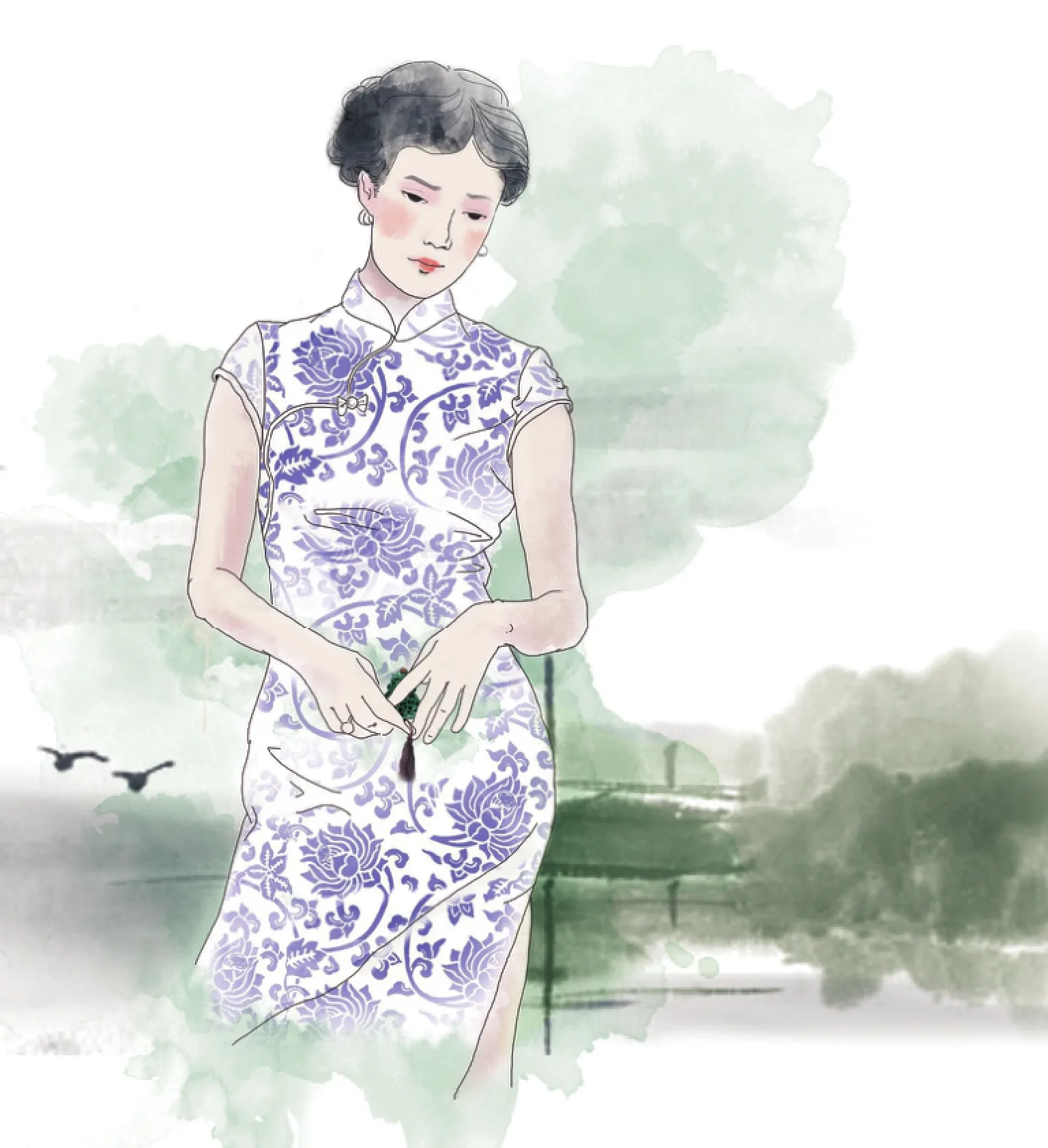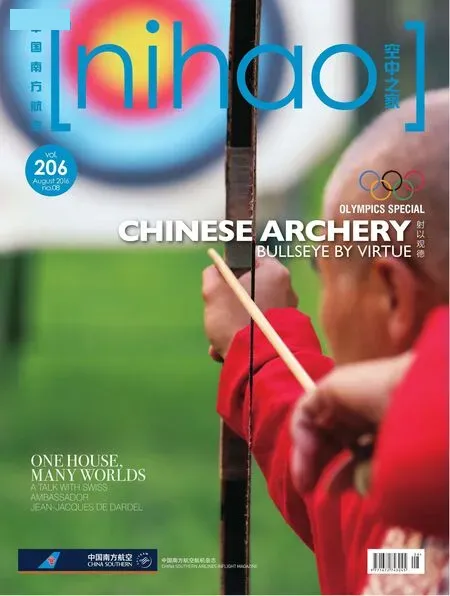THE SACHET
2016-04-17TextbyGuoDanTranslationbyShiYuIllustrationsbyHaolunZhang
Text by Guo Dan Translation by Shi Yu Illustrations by Haolun Zhang
THE SACHET
Text by Guo Dan Translation by Shi Yu Illustrations by Haolun Zhang

When I was in downtown Hangzhou the other day, I thought it couldn't hurt to swing by the Lingyin Temple while I was there. So I was thinking about wearing the red cheongsam (close- fitting woman's dress with a high neck and slit skirt), and was going to bring it with me, but an elder member of the family talked me out of it:“ it is disrespectful to pray to the Buddha wearing a boldly enchanting red cheongsam; you are going to look like a tease who wants to find herself some trouble.”
So I went wearing a robe. You never go wrong with a loose robe when you are going to a place where the Buddha rests. It was raining outside, and seemed like it has always been raining since the Han Dynasty (221-206 BC), when princesses had to marry foreign lords in order to make peace.
I wore a censer-shaped pendant made of Hotan (an area in Xinjiang province) jade, and a sachet also made of Hotan jade. This sachet, which originated from the Qing Dynasty (1644 to 1912), was what set me thinking about the red cheongsam: I could hang it at the slit of my dress as a decorative ornament, or I could knot it on the lowest button of the dress.
This robe had been tailored specially so that thesachet hung just right so that I could touch it when I looked down. Once upon a time, there was a man who fell desperately in love with a lady. He was eager to find out how the lady felt for him, yet the lady, wholly engrossed with her own feelings, wouldn't answer him. She just looked down, touching the sachet. She thought about her family, her father and her brother, who were all in trouble. She was not sure whether or not this man standing right in front of her was the one. Thinking about this, sorrows from deep inside came to the surface, and she started to cry suddenly, leaving the clueless man wondering what the matter really was.
Later, without being formally informed whether the girl would marry him, the man still received a sachet as her farewell gift. He put it on his desk. Every time he looked at this sachet it reminded him of the gesture of her delicate hand, the smoothness of her skin, and all of her beauty.
The man grew old, but the sachet still hung peacefully on his desk, and eventually he forgot the meaning of this sachet. After he died, this sachet failed to attract his son or grandson's attention. Like a lost ghost, it had been wandering around ever since, and finally, it became mine.
Now, I go to the Lingyin Temple to pray to the Buddha, wearing this sachet.

Kallen Guo
senior filmmaker, socialite and bestselling author, authored Don't Fall in Love with Zurich, the winner of The Best Foreign Language Novel.
郭丹
资深影视人、名媛、畅销书作家。代表作包括最佳外语小说奖获得作品《别爱苏黎世》等。
香囊探
日间在杭州市内,顺便去拜拜灵隐寺。本来带了裹身红旗袍,但有长辈说不妥:穿着妖妖娆娆的红旗袍去拜佛,总是不敬,仿佛自找雷劈的狐狸精。
还是穿道袍,宽宽大大不出错。窗外在下雨——解忧公主时代的雨,一直下到了现今。
我戴了和田玉香炉形状的吊坠,还有个清代和田玉香囊襟挂 —— 挂在裙侧,做衣服坠角,或者在最末一个扣子上绾个缳——为了这个我才想穿旗袍。
道袍是改良的,扣子太靠上,可是即便如此,低头不语的时候,抚弄香囊也刚刚好。古时候某男子急吼吼询问女子心意,女子总不能言,低头满怀心事地抚弄香囊;想着家族父兄,事事不能如愿,眼前不知是不是良人,忽然悲从中来,好好地就哭起来,使得男子莫名其妙没个头绪。
后来女子家里允嫁了,再或者拒绝了,香囊还是作为信物或者诀别之物送了过来,放在男子的案头,男子看到香囊就想起女孩子的纤纤素手和低头颈后粉白的一撇。
后来男子老了,他案头还挂着这个香囊,他忘记这个香囊的来由。男子死后子孙来收拾遗物,孝或者不孝,这都不是什么大物件儿,
兜兜转最后落到了我手里。
如今我戴着它,依旧去灵隐寺上香。

